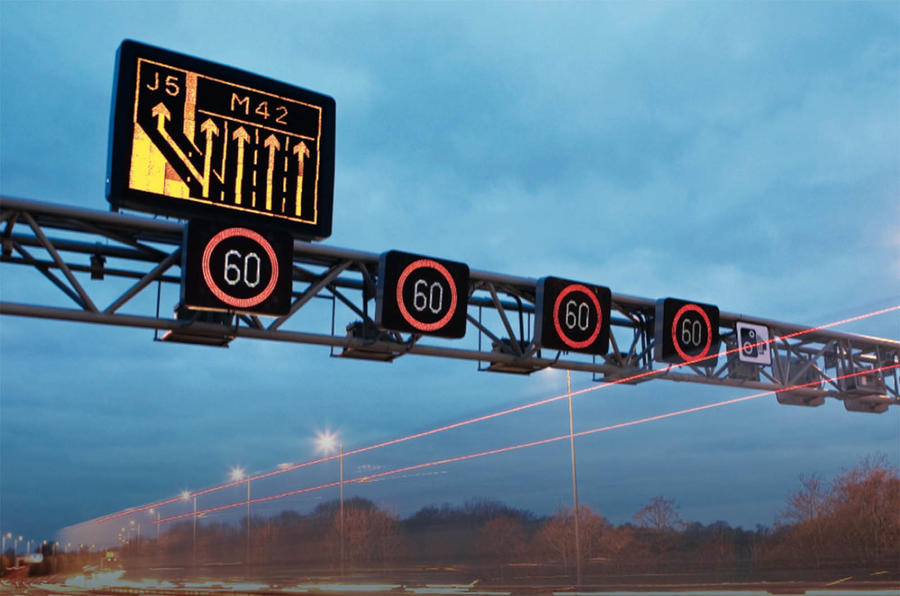The smart motorway upgrade for the M4 is unlikely to include additional emergency rest areas (ERA), despite a recent agreement with parliament, because the project can’t be changed at the last minute.
Preparatory work has started to switch the M4 to a four-lane motorway by making the hard shoulder a ‘running lane’, with construction due to start imminently. The upgrade will cover 32 miles between junction 3 (Hayes) and 12 (Theale) in a five-year project costing up to £862 million and due to finish in 2022.
The spacing of ERAs has become a controversial topic following several serious accidents in which a vehicle had broken down on what was previously the hard shoulder and, having not been able to reach an ERA, was hit by following traffic.
UK's new petrol and diesel car ban could be enforced from 2030
Pressure to build smart motorways with refuge areas closer together has been building after concerted efforts by the House of Commons Transport Select Committee and the AA. On most smart motorways, ERAs have been built at intervals of 1.5 miles. Highways England (HE), which operates the motorway network, recently agreed to alter future ERA spacings to one mile but said this will only happen on “future projects”, not those already under way. Attempting to alter the agreed planning permission for the M4 project to add extra ERAs at this stage would introduce a significant delay.
“As it is already in the delivery phase, the M4 smart motorway will probably not be upgraded with more frequent ERAs,” an HE spokesman said.
AA president Edmund King said: “We are very pleased that HE has changed its mind and agreed to more ERAs. This has been a four-year struggle to make smart motorways safer, but we are now concerned about the M4 project.”
Highways England presents forecast for autonomous, connected cars on UK roads
HE has not identified the first scheme that will be built with extra refuges. “We will likely have to wait until the next roads investment period,” it said. That suggests at least three years, when the next Road Investment Strategy is finalised by the Government. In the meantime, HE has pledged to look at existing smart motorways and possibly add more refuges to carriageways where there “are issues”.
The original 2003 pilot scheme for ‘hard shoulder running’ on the M42 included ERAs at half-mile (800m) intervals. However, the specification was later changed without consultation – the distance between refuges trebled to 1.5 miles – and then implemented on a new generation of smart motorways, immediately sparking safety concerns.





Join the debate
Add your comment
Smart Motorways
Exactly what is smart about a road which has nowhere to go if you break down?
The hard shoulder was created for a reason, one which, as indicated by this article, clearly still exists. Opening the hard shoulder up to running traffic is one of the stupidest and most dangerous ideas I have ever seen.
But it is not safe to use
But it is not safe to use cruise as these roads are far too busy in an overpopulated little country like England. Even Yorkshire has more people than the whole of Scotland! I am so glad I live in a Northern remote area with open empty roads.
Cruise control
maybe I am just lucky, but I drive up and down the A23 and A27, two very busy roads, four times every day, at rush hour, and I use cruise control every time. If people stopped driving so fast they wouldn’t have anything to moan about.
oh no
wasting more of our money on a so called smart motorway which is a motorway where you drive in perpetual fear of speed camera enablement. i followed on the m1 a lady doing 75 who kept braking at every single gantry Cleary in paranoia. Wideneing may help but the bottleneck is where the motorway ends eastbound just before the westway. westbound its them m25 junction. i hate these expensive schemes that make the stasi/someone to watch over us to levels that would not have been acceptable in the past.
jer wrote:
Re the paranoia about speed Cameras, I avoid motorways because you end up looking for the Cameras and I feel I’m not concentrating on driving as I should be, at least on A’ Roads there’s less high speed Traffic and less to worry about, I guess it cuts the stress levels......
Re. the speed cameras, their
Re. the speed cameras, their trigger speed is set ludicrously high (something like 85-90mph) so you should never have to worry unless you're doing daft speeds. Also, cruise control takes the worry out completely.
75
[quote=jer]
wasting more of our money on a so called smart motorway which is a motorway where you drive in perpetual fear of speed camera enablement. i followed on the m1 a lady doing 75 who kept braking at every single gantry Cleary in paranoia. Wideneing may help but the bottleneck is where the motorway ends eastbound just before the westway. westbound its them m25 junction. i hate these expensive schemes that make the stasi/someone to watch over us to levels that would not have been acceptable in the past.
[/quote)
if you had not been exceeding the 70 mph speed limit you would not have had to slow down behind the other driver. I bet you would never tell your insurance company that you drive above the speed limit.
And “perpetual fear of speed camera enablement”. Only someone who is “perpetually” driving above the speed limit has anything to fear from speed cameras.